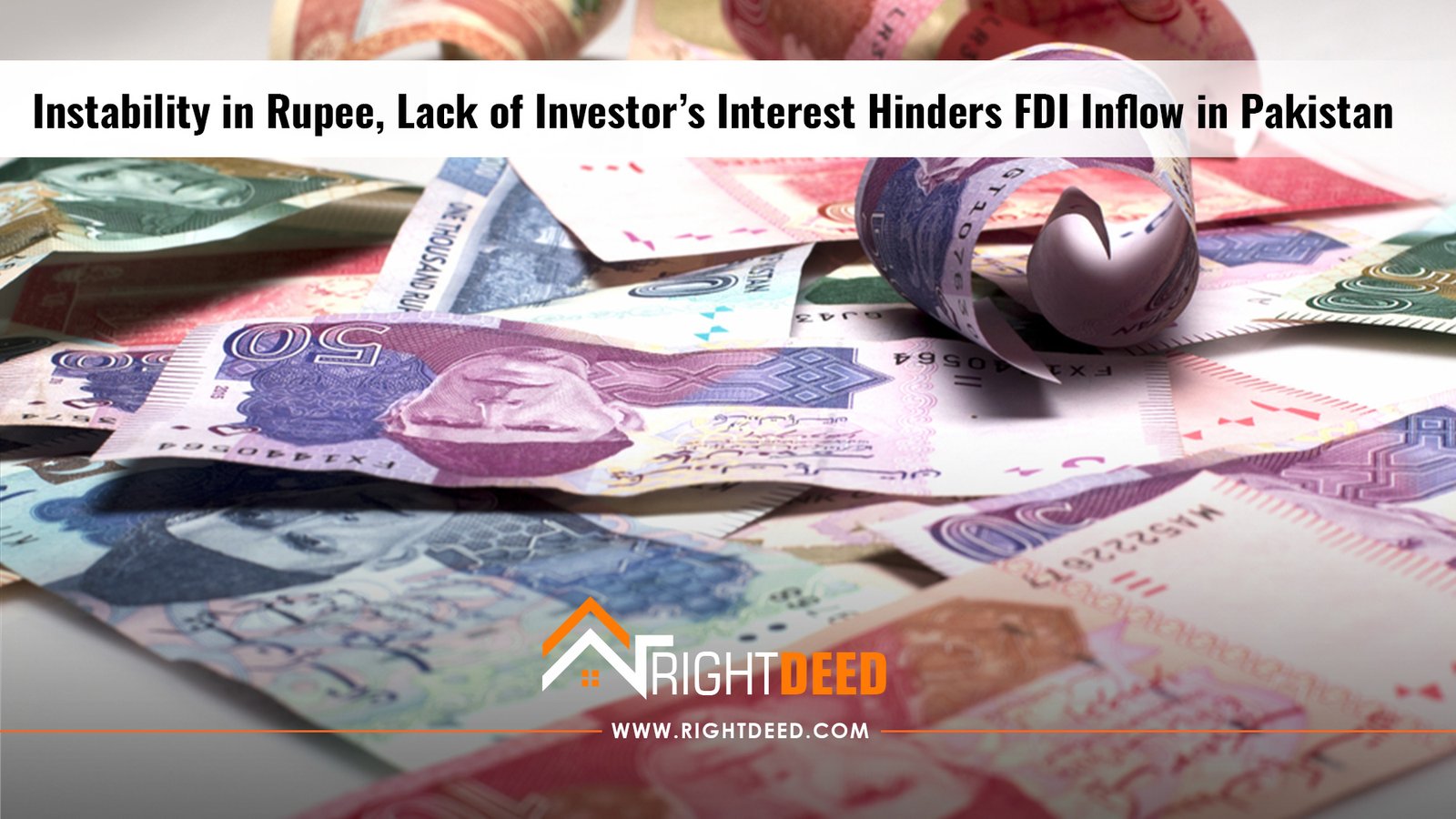Instability in Rupee, lack of investor’s interest hinders FDI inflow in Pakistan

KARACHI: Pakistan is faced with several financial problems, including the payment balance crisis, an emerging fiscal shortfall, and a volatile exchange rate of currencies.
Foreign Direct Investment (FDI) exportations and influxes into Pakistan are disruptive. The IMF's endorsement is probably to relieve certain economic issues by stockpiling the State Bank of Pakistan's (SBP) foreign-currency stocks that are urgently necessary and by reducing the currency-exchange-rate volatility that was noted recently.
Since December 2017, the Pakistani rupee has been depreciating significantly in comparison to the US dollar. Despite the fact that the overvaluation and absence of sustainable stocks of foreign currencies were necessary for depreciation, but still, it had not helped to collect foreign currency reserves.
Read More: Tax amnesty scheme beneficiaries comprise 70pc from Karachi and Lahore
Export income growth can help alleviate monetary volatility. Failure to generate dollar inflows through export revenues and foreign investment indicates that bad company circumstances and confident investors in the economy are probable factors for damping not only the country's manufacturing operations but also investments across industries.
Pakistan got FDI flows of $1,61 billion from July 2018 to May 2019 according to statistics given by the Board of Investment (BOI). The figure of $3.09 billion earned in FY 18 was substantially lower.
The FDI influx between FY16 and FY18 was over $2.7 billion average. Since the FY14, China has been Pakistan's biggest cause of FDI inflow. Over 58% of the FDI originated in China in FY18. Britain was the second biggest source, accounting for 9.9% of the complete FDI.
Between FY16 and FY18, China spent over $1 billion annually in Pakistan and peaks at $1.8 billion for FY18. From July until May 19, only 495 million dollars were recorded.
The FDI inflow from Hong Kong increased dramatically and recorded a shift of over $126 million from the FY18 amount. Hong Kong often performs the position of intermediary for Chinese shareholders, with its more advanced financial market and legal system.
The decline of flows from FDI to Pakistan in the sector indicates a powerful connection to investment related to the China-Pakistan Economic Corridor (CPEC). Since FY17, over 21 per cent of complete FDI inflows to Pakistan have been recorded by the building industry on average. In FY 18, the power industry received over 32% of FDI. But the disinvestment in the energy industry led in a 261-million-dollar outflow from July to May 19.
The petroleum and gas industry was one of the main beneficiaries of FDI in FY16, an average between FY10 and FY15 of more than 40%. In FY16, more than 50% of FDI was also in the economic services industry. The introduction of CPEC led to a change, given the increasing significance as suppliers of energy and construction sector.
The share of other industries is expected to boost, with investments in the energy industry tapering off in Year 19. The textile sector, although making the most contribution to manufacturing activity and employment in the manufacturing sector in Pakistan, has not attracted significant foreign investment.
The average textile influx between FY13 and FY17 amounted to roughly $270 million with an average 16.4% share of the complete FDI inflows. The inflow reduced in FY18 to 49.7 million dollars, with a forecast increase of 60 million dollars in FY19. Their share of complete FDI inflows fell to less than 5%.
In addition, less than 5% of complete FDI inflows since 2014 have been recorded on average by the chemical industry.














0 Comments